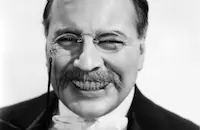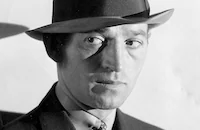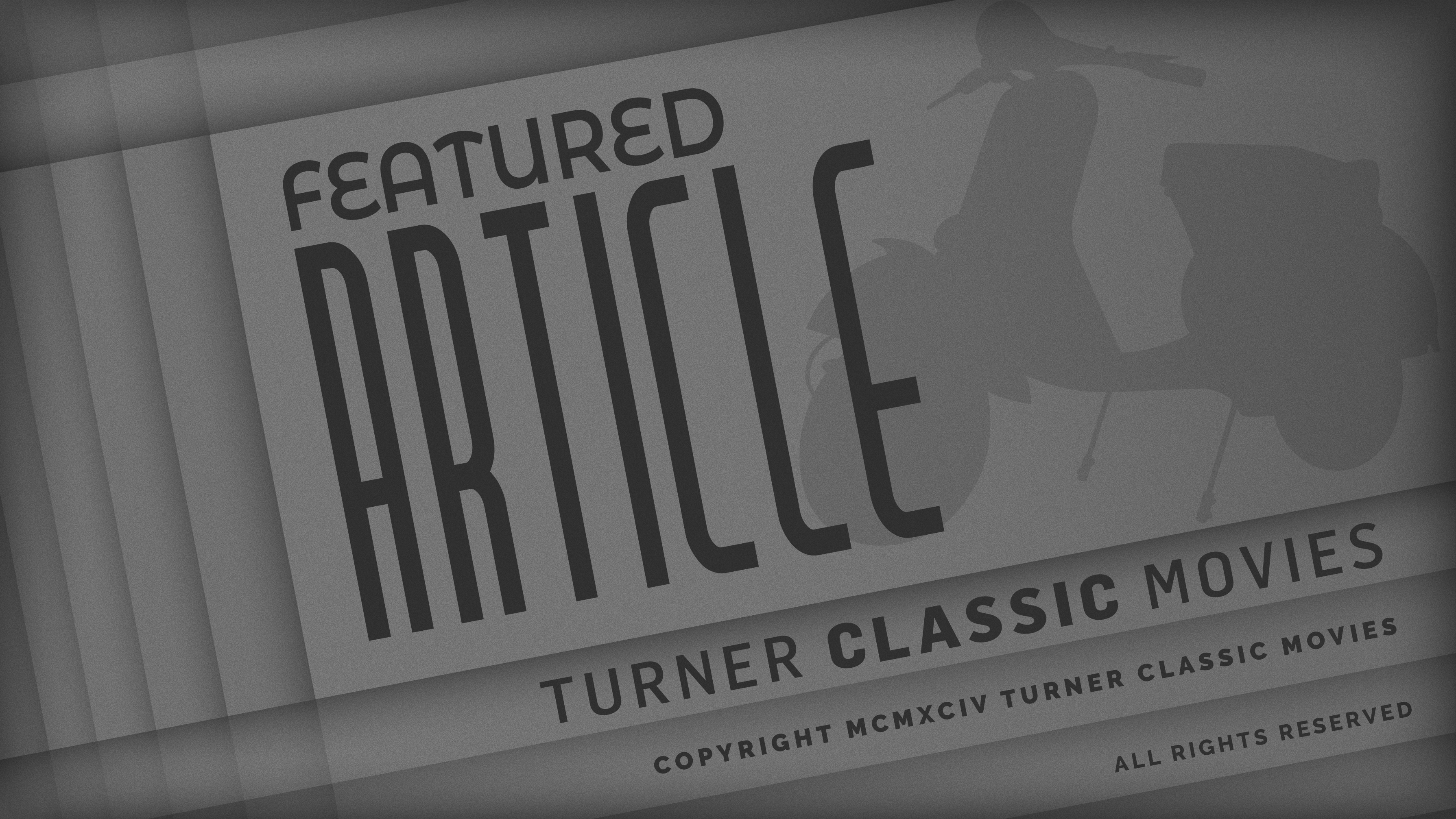Little Caesar

Brief Synopsis
Cast & Crew
Mervyn Leroy
Edward G. Robinson
Douglas Fairbanks
Glenda Farrell
William Collier Jr.
Sidney Blackmer
Film Details
Technical Specs

Synopsis
After robbing a gas station, Enrico Cesare Bandello, known as Rico, leaves his small town for the city with his friend Joe Massaro. Joe wants to find work as a dancer, but Rico admires the front page notoriety that gangster Diamond Pete Montana receives. He joins Sam Vittori's gang, one of the two biggest gangs in town, working directly under Montana, chief lieutenant to Big Boy, the head of the city's underworld. The other gang is headed by Little Arnie Lorch, who owns a gambling salon. Joe has a job as a dancing partner to Olga Strassoff at Lorch's establishment. Rico plans a New Year's Eve raid on Lorch's club and convinces Joe to act as the front man. During the raid, Rico kills McClure, the crime commissioner, who is a guest that night. After that, Rico and Sam compete for leadership of the gang and Rico wins. Lorch tries to kill Rico, and after he fails, Rico hunts him down and drives him out of the city. Soon afterward, Big Boy offers Rico Montana's territory, and Rico begins to dream of heading the underworld in place of Big Boy. Joe, meanwhile, plans to leave the gang at Olga's urging. Rico cannot bear to let Joe go, however, and in turn, demands that he leave Olga, threatening to kill her when Joe refuses. To save them both, Joe decides to turn state's evidence. Rico intends to kill Joe to stop him from talking, but he cannot pull the trigger. After his failed assassination attempt, Rico flees, hiding out from the police. Hoping to goad Rico into revealing himself, Sergeant Flaherty tells the newspapers that Rico was a coward. Rico reacts by phoning the police, and the call is traced to his hiding place, where the police hunt him down and shoot him. Rico dies beneath a poster advertising the dancing team of Joe and Olga.

Director

Mervyn Leroy
Cast

Edward G. Robinson

Douglas Fairbanks

Glenda Farrell
William Collier Jr.

Sidney Blackmer

Ralph Ince
Thomas Jackson
Stanley Fields
Maurice Black

George E. Stone

Armand Kaliz
Nick Bela

Lucille La Verne
Landers Stevens
Crew

Photo Collections
Videos
Movie Clip





Trailer
Hosted Intro
Film Details
Technical Specs

Award Nominations
Best Writing, Screenplay
Articles
Little Caesar
The making of Little Caesar is just as fascinating as the film's real-life parallels. Producer Hal Wallis originally auditioned Edward G. Robinson for the supporting role of Otero (played in the film by George E. Stone) before deciding he was perfect as Ricco. Clark Gable had been the first choice of director Mervyn LeRoy for the role of Joe Massara, Ricco's sidekick, but was rejected when Warner Brothers production head Darryl F. Zanuck saw Gable's screen test. In his autobiography, Mervyn LeRoy: Take One, the director recalled that Zanuck said," You've just thrown away five hundred bucks on a test. Didn't you see the size of that guy's ears?" Needless to say, Gable was out and the role went to Douglas Fairbanks, Jr.
As for the actual filming of Little Caesar, Edward G. Robinson's aversion to the sound of gunfire was obvious from the beginning. According to LeRoy, "Every time he squeezed the trigger, he would screw up his eyes. Take after take, he would do the same thing. In the end, we had to tape up his eyelids to make sure it wouldn't show." Offscreen, Robinson was just the opposite of the vicious thugs he played onscreen. He was a kind and gracious gentleman and had a great appreciation for the fine arts - particularly painting, which he took up as a hobby. Although Little Caesar is considered one of Robinson's most memorable performances, it was overlooked by the Academy Awards committee that year (the film only received one Oscar® nomination for Best Writing Adaptation) and forever typecast Robinson in the type of role he learned to loathe.
Director: Mervyn LeRoy
Producer: Hal B. Wallis
Screenplay: W. R. Burnett, Francis Edward Faragoh, Robert N. Lee, Robert Lord
Cinematography: Tony Gaudio
Editor: Ray Curtiss
Music: Erno Rapee
Art Direction: Anton Grot
Cast: Edward G. Robinson (Cesare Enrico Bandello), Douglas Fairbanks, Jr. (Joe Massara), Glenda Farrell (OLga Strassoff), Stanley Fields (Sam Vettori), Sidney Blackmer (Big Boy), Ralph Ince (Pete Montana).
BW-80m. Closed captioning. Descriptive video.
by Jeff Stafford

Little Caesar
Quotes
This is Rico speaking. Rico! R-I-C-O! Rico! Little Caesar, that's who! Listen, you crummy, flat-footed copper, I'll show you whether I've lost my nerve and my brains!- Caesar Enrico Bandelli
You want me, you're going to have to come and get me!- Caesar Enrico Bandelli
You can dish it out, but you got so you can't take it no more.- Caesar Enrico Bandelli
Mother of Mercy! Is this the end of Rico?- Caesar Enrico Bandelli
Trivia
A federal anti-organized crime law - The Racketeering Influence Corrupt Organization Act, or RICO - got its acronym from Edward G. Robinson's character.
Based loosely on the life of Al Capone.
Notes
Motion Picture Herald notes that the opening weekend of this film's release broke the all-time attendance record for Warner Bros.' Strand Theater in New York, grossing $50,000 in eleven performances. Both Edward G. Robinson and Douglas Fairbanks, Jr. made personal appearances at the New York premiere, for which the top ticket prices were two dollars. According to his biography, Jack Warner wanted Clark Gable for the role of Rico. According to modern sources, the character of Massara was based on actor George Raft, who was associated with Owney Madden, the man who organized the taxi racket in New York City. Although The Doorway to Hell, a gangster film released by Warner Bros. in 1930 (see AFI Catalog of Feature Films, 1921-30; F2.1414) was a big hit at the time, most sources consider Little Caesar to be the film which started a brief craze for the genre in the early 1930s. Little Caesar was Robinson's first starring role and won him wide public attention, typecasting him for a while in gangster roles.
The MPAA/PCA collection at the AMPAS library include a letter from MPPDA official Maurice McKenzie to Colonel Jason S. Joy reporting New York Congressman F. H. LaGuardia's strenuous objections to the portrayal of Caesar as an Italian. McKenzie wrote, "...he is going to publicly denounce Mr. Hays as a hypocrite, and the picture business as a bad business...[he states that] Mr. Hays would not dare to produce such a picture with a Jew as that character-he would lose his job if he did...." According to modern sources, in some release prints, Rico's last words, "Mother of God, is this the end of Rico?" were changed to "Mother of mercy, is this the end of Rico?" to avoid objections from the United Council of Churches. The film was budgeted at $700,000 according to modern sources.
Little Caesar received an Academy Award nomination in the Best Writing (Adaptation) category. Modern sources list additional credits as Al Hill (Waiter), Ernie Adams (Cashier), Larry Steers (Café guest) and George Daly (Machine gunner).

Miscellaneous Notes
Released in United States 1930
Released in United States 1996
Released in United States 1996 (Shown in New York City (American Museum of the Moving Image) as part of program "Warner Bros. Whiz: Mervyn LeRoy in the 1930s" July 20 - August 4, 1996.)
Released in United States 1930
















